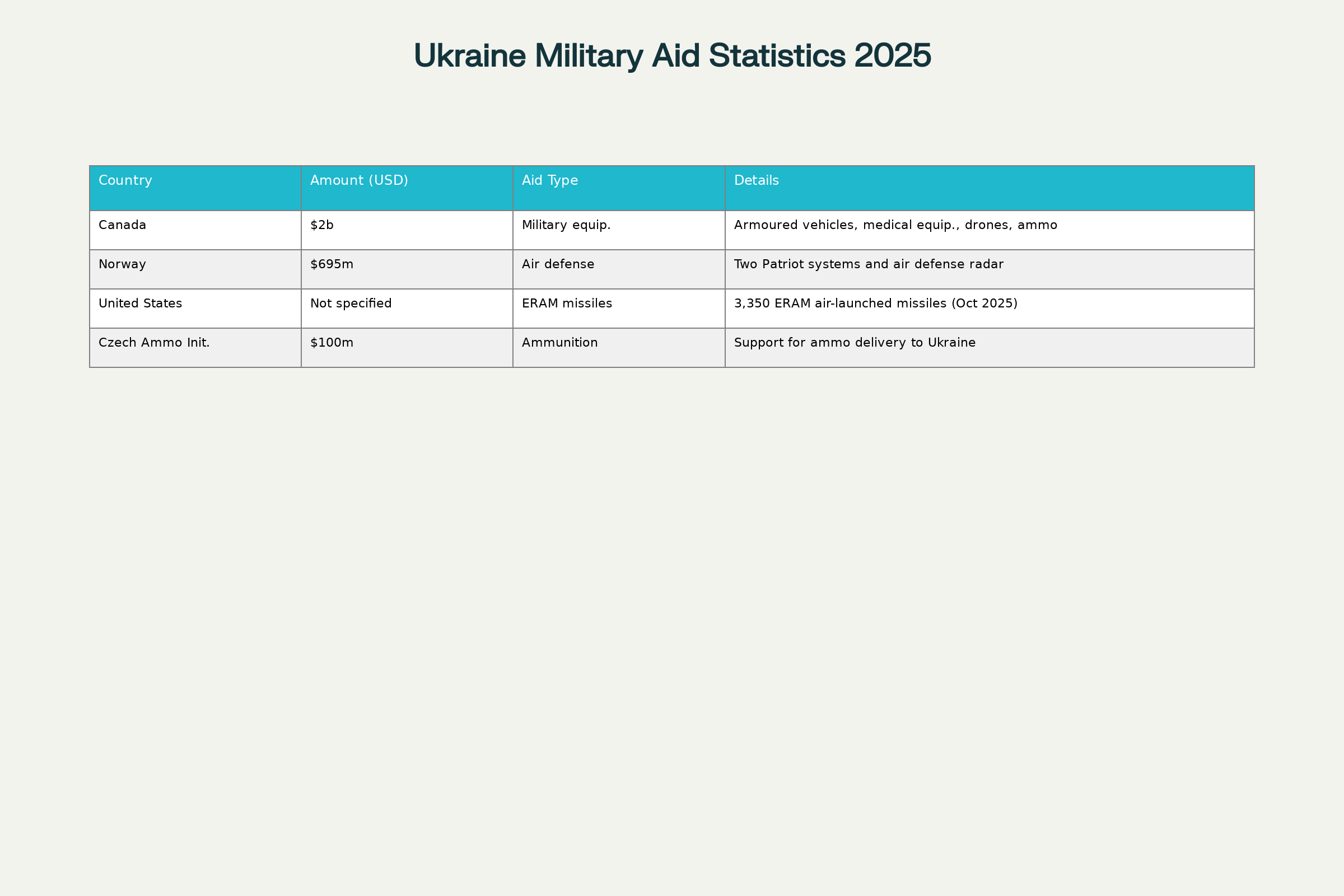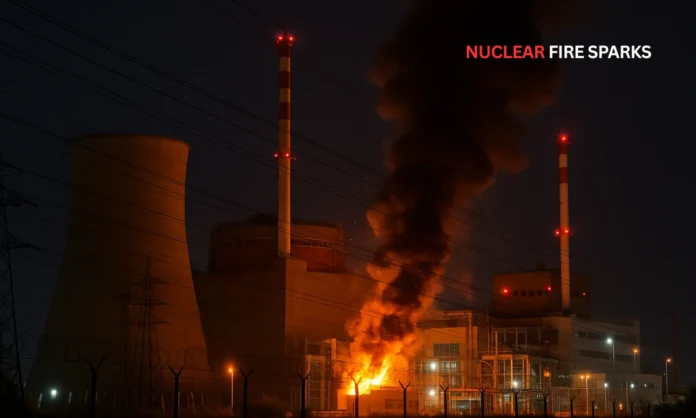Key Highlights
- Ukrainian Strikes drones targeted a nuclear power plant in Russia’s Kursk region, forcing a 50% reduction in one reactor’s capacity while radiation levels remained normal
- Russia launched 72 drones and decoys at Ukraine on Independence Day, with 48 intercepted by air defenses as military aid commitments exceeded $2 billion from Western allies
- International partners pledged significant military support, with Canada announcing $2 billion in aid and Norway contributing $695 million for air defense systems
Opening Overview
Ukrainian strikes on Russian territory reached a critical nuclear facility in the Kursk region as the nation celebrated its 34th Independence Day, demonstrating both escalating cross-border warfare and Ukraine’s continued determination to resist Russian aggression. The Ukrainian strikes targeted the nuclear power plant approximately 60 kilometers from the Ukrainian border, sparking a fire that damaged auxiliary infrastructure while forcing operational reductions at one of Russia’s major nuclear installations. Russian authorities reported intercepting 95 Ukrainian Strikes drones across multiple regions overnight into Sunday, while Ukraine’s air force confirmed that Russia launched 72 drones and one cruise missile in retaliatory strikes, with Ukrainian forces successfully intercepting 48 of these incoming threats.
🔥 Ukraine’s Independence Day fireworks:
— Angelica Shalagina🇺🇦 (@angelshalagina) August 24, 2025
✅ Ust-Luga port (Leningrad region): hit gas condensate unit, capacity 6.9M tons/year.
✅ Syzran oil refinery (Samara region): strike and detonation, capacity 8.5M tons/year (≈3% of all russian refining).
Looks like even russian oil… pic.twitter.com/AZLi9FX93X
The Ukrainian strikes occurred as President Volodymyr Zelenskyy delivered his Independence Day address from Kyiv’s Independence Square, emphasizing the nation’s resolve to build “a Ukraine that will have enough strength and power to live in security and peace.” International support for Ukraine’s defense capabilities surged during the independence celebrations, with Canadian Prime Minister Mark Carney announcing a comprehensive $2 billion military aid package and Norway pledging $695 million for critical air defense systems.
Cross-Border Escalation Threatens Nuclear Infrastructure
Ukrainian Strikes drone operations against Russian territory have intensified significantly, with multiple Ukrainian strikes targeting strategic infrastructure deep within Russian borders. The Ukrainian strikes on the Kursk nuclear power plant resulted in damage to an auxiliary transformer and forced a 50% reduction in the operational capacity of reactor No. 3, according to Russian nuclear authorities. The facility’s press service confirmed that the fire sparked by the downed Ukrainian drone was quickly extinguished with no casualties reported, while radiation levels remained within normal parameters throughout the incident.
- Russian defense systems intercepted 95 Ukrainian drones across more than a dozen regions on Independence Day
- The Kursk nuclear facility sustained infrastructure damage requiring reactor capacity reductions while maintaining safety protocols
The International Atomic Energy Agency (IAEA) acknowledged reports of the transformer fire at the nuclear plant linked to military activities but emphasized that radiation monitoring confirmed normal levels near the facility. IAEA Director-General Rafael Grossi stressed that “every nuclear facility must be protected at all times,” highlighting international concerns about Ukrainian strikes near nuclear installations. The Ukrainian strikes also targeted the Ust-Luga fuel export terminal in Russia’s Leningrad region, where approximately 10 Ukrainian Strikes drones were reportedly shot down with debris igniting fires at the major fuel facility.
Russian authorities characterized the Ukrainian strikes as part of a broader pattern of cross-border attacks targeting energy and power infrastructure throughout western Russia. The Ukrainian strikes coincided with Russia’s retaliatory bombardment of Ukrainian territory using 72 drones and decoys along with cruise missiles, demonstrating the continued escalation of long-range strike capabilities on both sides of the conflict.
Independence Day Celebrations Emphasize National Determination
Ukraine’s 34th Independence Day celebrations took place amid active hostilities, with President Zelenskyy delivering his address from Kyiv’s Independence Square to emphasize the nation’s unwavering commitment to sovereignty and territorial integrity. The independence celebrations featured significant international participation, with U.S. special envoy Keith Kellogg attending ceremonial events where Zelenskyy awarded him the Ukrainian Strikes Order of Merit of the 1st degree. Canadian Prime Minister Mark Carney’s arrival in Kyiv for meetings with Ukrainian leadership underscored the continued international support for Ukraine’s independence and defense efforts.
- President Zelenskyy’s Independence Day address emphasized building “a Ukraine that will have enough strength and power to live in security and peace”
- International dignitaries including U.S. and Canadian officials participated in independence celebrations demonstrating ongoing Western support
The independence celebrations occurred as Ukraine maintained its territorial defense against Russian forces across the 1,250-mile front line, with ongoing combat operations in eastern regions including Donetsk where Russian forces claimed to have seized two villages. Zelenskyy’s Independence Day remarks specifically addressed Ukraine’s position in potential peace negotiations, stating that “what our future will be is up to us alone” in reference to recent U.S.-Russia diplomatic discussions. The independence commemoration highlighted Ukraine’s transformation from Soviet dependence to a nation that “the world respects” and “perceives as an equal” in international affairs.
Pope Leo XIV offered special prayers for peace in Ukraine during his weekly blessing, sending a telegram to President Zelenskyy expressing solidarity with the Ukrainian people on their independence day. The religious leader’s message implored “the Lord to move the hearts of people of good will, that the clamor of arms may fall silent and give way to dialogue, opening the path to peace for the good of all.”
International Military Aid Commitments Surge During Independence Celebrations
Western allies demonstrated substantial commitment to Ukrainian defense capabilities through major military aid announcements coinciding with Independence Day celebrations, with total pledges exceeding $2.7 billion in new support packages. Canada’s comprehensive $2 billion military aid allocation represents one of the largest single commitments, including $835 million for military equipment and supplies such as armored vehicles, medical equipment, spare parts, small arms, ammunition, and drone capabilities. The Canadian package also dedicates $220 million specifically for drone and counter-drone capabilities, including investments in joint Ukrainian-Canadian defense production ventures.
- Canada committed $2 billion in military aid with delivery beginning in September 2025
- Norway pledged $695 million for two Patriot air defense systems in partnership with Germany
- The United States approved 3,350 Extended Range Attack Munition (ERAM) missiles for delivery in mid-October 2025

Military Aid to Ukraine in 2025 from Major Allies
Norway’s $695 million contribution focuses specifically on air defense capabilities, funding two Patriot systems including missiles and supporting radar equipment through joint Norwegian-German financing. Norwegian Prime Minister Jonas Gahr Store emphasized that these air defense systems address Ukraine’s most urgent defensive requirements against escalating Russian drone and missile attacks. The United States approved the sale of 3,350 Extended Range Attack Munition (ERAM) air-launched missiles to Ukraine as part of a European-funded arms package, with these advanced systems expected to arrive in mid-October 2025.
The military aid surge occurs as Russian drone attacks against Ukraine reached record levels, with more than 6,000 drones launched in July 2025 alone, representing a 14-fold increase compared to the same period in 2024. Ukrainian Air Force data indicates that Russia’s drone offensive has intensified dramatically since early 2025, with combined missile and drone assaults causing significant civilian casualties and infrastructure damage across Ukrainian territory.
Sustained Air Campaign Intensifies Across Both Nations
The air warfare component of the conflict has escalated dramatically, with both nations deploying unprecedented numbers of unmanned systems and long-range strike capabilities against strategic targets. Russian forces have increased drone deployment to over 6,000 units monthly, with July 2025 marking the highest single-month total since the invasion began in February 2022. Ukrainian air defense capabilities have successfully intercepted significant portions of incoming Russian strikes, with forces downing or jamming 48 of 72 Russian drones during the Independence Day assault period.
- Russian drone attacks reached 6,297 units in July 2025, representing a 16% increase from June and 14 times the July 2024 level
- Ukraine’s air defense systems maintained high interception rates despite increased Russian drone volumes
- Both nations demonstrate expanding long-range strike capabilities targeting critical infrastructure
The sustained air campaign has forced both countries to adapt their defensive strategies, with Ukraine receiving substantial international support for air defense systems while Russia continues expanding its domestic drone production capabilities. Ukrainian forces have demonstrated increased proficiency in long-range strikes against Russian territory, successfully targeting nuclear facilities, fuel terminals, and energy infrastructure across multiple Russian regions. These Ukrainian strikes represent a significant evolution in the conflict’s geographic scope, with operations now regularly extending hundreds of kilometers into Russian territory.
Russian authorities report that Ukrainian strikes have targeted power and energy facilities across western regions, forcing defensive measures at critical infrastructure sites including nuclear power plants. The escalating air warfare demonstrates both nations’ commitment to using unmanned systems and long-range missiles as primary tools for striking strategic targets while minimizing personnel risks in cross-border operations.
Final Perspective
Ukraine’s Independence Day celebration amid active hostilities underscores the nation’s transformation from a newly independent state to a country capable of conducting sophisticated military operations while maintaining international diplomatic relationships and securing substantial defense commitments. The Ukrainian strikes on Russian nuclear infrastructure demonstrate both the conflict’s escalation and Ukraine’s willingness to target high-value strategic assets despite international concerns about nuclear facility safety. As Western military aid exceeds $2.7 billion in new commitments, Ukraine’s defensive capabilities continue evolving to address Russia’s expanding drone offensive, which has reached unprecedented levels of intensity with over 6,000 monthly attacks.
The independence celebrations revealed Ukraine’s dual focus on defending current territory while building long-term security partnerships that extend beyond the immediate conflict period. International participation in Independence Day events, combined with substantial military aid announcements, reflects sustained Western commitment to Ukrainian sovereignty despite ongoing diplomatic efforts to negotiate potential peace agreements. The escalating air warfare between both nations indicates that cross-border strikes and defensive countermeasures will likely remain central elements of the conflict, with both countries demonstrating expanding capabilities to target strategic infrastructure across significant distances.


